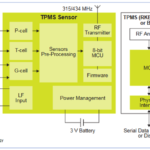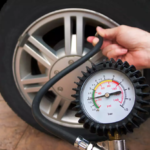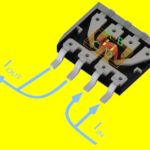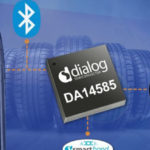Sensor-based monitoring systems for tire pressure can warn of potential problems, but there’s much more to the story than just a pressure-measurement system.
You may have had the misfortune to have the “Check Engine” light come on in your car. This single illuminated indicator encompasses a wide range of possible problems ranging from trivial where you can keep driving (the gas tank cap not on properly) to severe requiring an immediate stop (major engine problem such as loss of coolant). It’s coarsely informative and thus frustrating and frightening, all at the same time.
But there’s another car-console indicator with the opposite information aspect that tells the very specific tale of low tire pressure (Figure 1). The symbol’s appearance is the culmination of a complicated system mandated for installation in all cars as of 2007 and is called the Tire Pressure Monitoring System, or TPMS.

This article will look at how TPMS and its mandate came about, how it is implemented, and some issues associated with its operation and maintenance.
Mandating the TPMS
The story of the TPMS begins in the late 1990s when there was a surge of rollover crashes, primarily in Ford Explorer SUVs fitted with Firestone tires which were underinflated (Figure 2). Apparently, the underinflated tires would overheat, the tread layers would separate, and the vehicle would roll over as the driver attempted to compensate and maintain control. The relatively lower tire pressure was due to the lower pressure specification which Ford used to overcome some other issues with that vehicle, or the user not filling the tires to specification, or both.
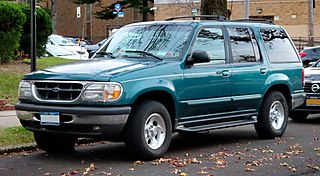
The relatively high center of gravity of the vehicle added to the problem. It was estimated that there were over 3,000 injuries and approximately 250 deaths due to Explorer-Firestone-related incidents. Firestone blamed Ford for poor stability design in the cars. In response, Ford blamed Firestone for tires designed and built to be overly susceptible to poor performance with lower-than-intended pressure. Many of the resulting lawsuits were settled out-of-court, and the specifics of the payment were never disclosed. The entire issue resulted in several vehicle and tire recalls.
These patterns of accidents and deaths received considerable publicity, which created demands by politicians for the industry to “do something” about this problem. The lawmakers then did the high-profile and obvious thing: in 2000, they passed the Transportation Recall Enhancement, Accountability, and Documentation (TREAD) Act which mandated that by 2007 all cars must be equipped with a TPMS system indicating to the driver when pressure in any one of the four tires was 25 percent or more below its nominal value.
The mandate was practical since developments in MEMS-based, and other bulk-crystal pressure sensors made them relatively inexpensive and reliable to fulfill that requirement. Further, the pressure of a car tire is typically around 30 pounds per square inch (PSI; 30 PSI is about 2 bar) which is easier to measure with reasonable accuracy than the very low pressure within the human body (under 3 PSI) or high pressures of industrial systems (hundreds of PSI).
Of course, a sensor alone is far from a complete system. In addition to sensor signal conditioning, the complete TPMS would also need a wireless way to report to the car “management” computer, which would then determine if the pressure was too low. The total TPMS design comprises a complicated, safety-related system which must function for years in the harsh automotive environment (ambient temperature extremes plus heated air in the tire, vibration, shock, and more). It’s aggravated by the fact that a representative 15-inch (25-inch total wheel diameter) tire rotates at around 840 rpm at 60 mph and 1,120 rpm at 80 mph (the exact number is a function of the specific tire/wheel diameter, of course).
The next part of this article looks at some perspectives related to the reality of the TPMS.
EE World related content
EEPROM-configurable IC enables easier development of TPMS modules
Smart Tires Pave the Road for Future of Autonomous Cars
When tire pressure monitoring gets smart
Miniature transponder coils target uses in tire pressure monitoring
References
TPMS Background and History
- Schrader TPMS Solutions, “Schrader History”
- CarID, “What Is The History Of Tire Pressure Monitoring Systems?”
- Gregg’s Automotive, “The Story Behind Tire Pressure Monitoring System (TPMS)”
- TMPS Direct, “A Brief History of TPMS”
- Wikipedia, “Firestone and Ford tire controversy”
TPMS Operation
- Tirebuyer, “What is TPMS (Tire Pressure Monitoring System)?”
- Wikipedia, “Tire-pressure monitoring system”
- Inertion, “The Better Way to Fill Your Tires”
- TiresPlus, “Tire Pressure Monitoring System (TPMS)”
- TMPS Direct, “TPMS Sensor Batteries”
- Priority Tire, “TPMS 101: What Is it and How it Works?”
- Car and Driver, “A Tire-Pressure Sensor Can Save You From Having a Blowout”
- How Stuff Works, “How Tire Pressure Monitoring Systems Work”
- Mechanic Base, “How to Reset Tire Pressure Light (TPMS) – By Car Model”
- Autel, “MaxiTPMS TS401”
- Subaru 2010, “How much does change in tire pressure affect tire circumference?”
TPMS ICs and Components
- Melexis, “World’s smallest TPMS solution”
- NXP, “Tire Pressure Monitoring Sensors”
- NXP, “TPMS Selector Guide”
- NXP, “A Global Solution for Tire Pressure Monitoring Systems”
- Infineon, “Tire Pressure Sensor (TPMS)”
- Infineon, “SP400-11-11 Automotive Tire Pressure Monitoring Sensor”
- Infineon, “SP40PLUS Tire Pressure Monitoring Sensor”

